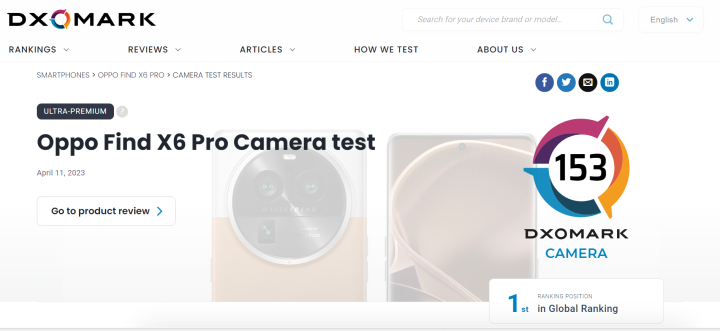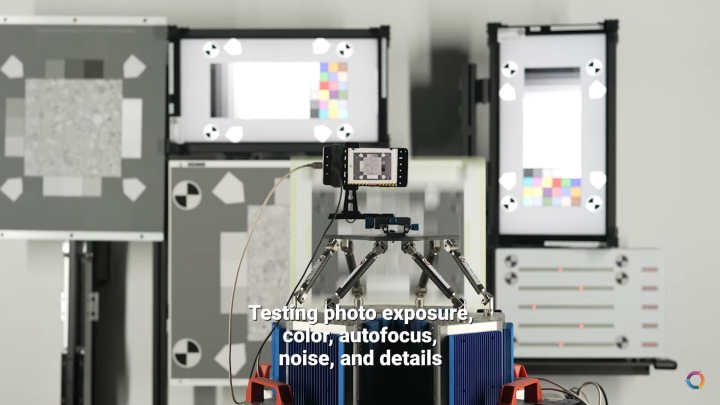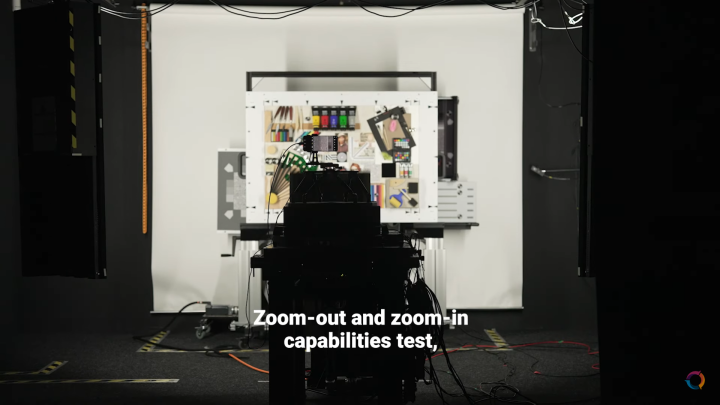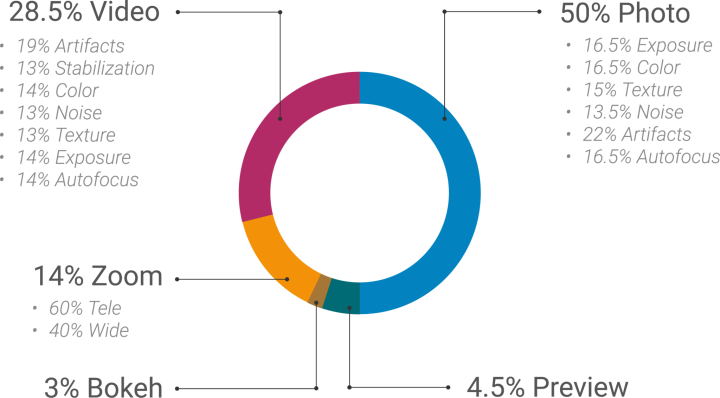We’ve all heard of DxOMARK camera rankings before. Smartphone brands that get that top DxOMark rank for their phone’s cameras proudly plaster the score next to their device, and why shouldn’t they? Getting a top score in a camera ranking is something to be proud of, right?
We’ve even recently seen the likes of the OPPO Find X6 Pro and the Honor Magic5 Pro recently top DxOMark camera rankings.

But how exactly does DxOMark rank smartphone cameras? Is it all numbers? Should we always get the phone with the highest DxOMark score?
In this article, we’ll be answering all your DxOMark questions and more.
Table of Contents
First, it’s important to understand who or what DxOMark is. Founded in 2008, DxOMark was originally owned by DxO Labs, a French engineering and consulting company, which is headquartered in Boulogne-Billancourt, Paris, France.
DxOMark describes itself as an “engineering services company whose testing, software, and benchmarking services help smartphone, speaker, and digital camera makers create the best possible products.”
The DxOMark website has become famous for providing users with digital image, audio, battery, and display quality ratings.

They pride themselves in using science-based evaluations to come up with these ratings, based on consumer research and people’s usage of electronic devices.
While DxOMark is an independent company, they also make it clear that they provide consulting services to manufacturers to help “tune and optimize [their] device throughout the camera development cycle.”
This means that companies can go to DxOMark and avail of their services to help fine-tune camera performance. Of course, this doesn’t mean that the DxOMark rankings are in any way affected by such services but it is important to know that DxOMark does indeed act as a consulting firm for these brands and manufacturers.
With that, it’s time to get into how they test smartphone cameras.
To test smartphone cameras, DxOMark developed what they call the DXOMARK Camera protocol back in 2012. It aims to provide a “comprehensive overview of smartphone camera performance, with the right indicators to help them choose the right product for their needs.”
This comprehensive overview results in an overall score that is made up of five sub-scores: Photo, Zoom, Bokeh, Preview, and Video.

To test camera performance, DxOMark uses some pretty legitimate in-house laboratory tests that try to recreate real-life usage.

They have tests that measure how smartphone cameras handle exposure, color, autofocus, noise, detail, and even zoom. These eventually result in a sub-score for either Photo, Zoom, Bokeh, Preview, or Video, which are comprised of even more aspects (such as Exposure, Color, Autofocus, Texture, Noise, and Artifacts for Photos).
DxOMark says that each phone camera takes around 3000 photos and 150 minutes of video to be analyzed and scored under the DXOMARK camera protocol.
What you’re probably most curious about is the “DxOMark Overall score”. This is probably the most oft-cited ranking or stat from DxOMark in relation to smartphones and smartphone cameras.

As mentioned earlier, the “Overall” score is a result of DxOMark mapping out the sub-scores into a number that gives users and manufacturers a “sense of the device’s total image quality performance.”
This is the important part: the subs-scores are then weighted in what DxOMark says “most closely matches their importance in real-world applications as judged by mainstream users.”
What does this all mean? Remember the sub-scores we mentioned earlier, i.e. Photo, Zoom, Bokeh, Preview, and Video?
DxOMark gives each score a weight in terms of what they think is most important to the end-user. In other words, some aspects of a camera have a much higher weight and influence on the final overall score than others.
We can see how DxOMark ranks each subscore below:

DxOMark Camera Subscore Structure
Of course, they don’t just come up with these percentages out of nothing. DxOMark says that they work with different types of smartphone photographers to ensure the rankings reflect what they find is important in their photography.
You might have seen a DxOMark overall score yourself and wondered: If it’s ranking, why is the number over 100? Isn’t it supposed to be a score of 100%?

Well, according to DxOMark, the Overall score is not a weighted sum of the sub-scores we mentioned earlier.
The Overall DxOMark camera score is a proprietary and confidential mapping of sub-scores into a combined score. The Overall score is also not capped at 100.
100 and above just so happens to be where the best smartphone cameras end up after going through the DxOMark camera protocol.
Well, even DxOMark has an answer for us here. While DxOMark highlights that the weight they give to each category or sub-score is based on what seems to be important to real-world camera users, they also know that each person values different things about their smartphone camera.
“…a device with very good overall scores may receive a higher rating than one which has a few excellent strengths and some noticeable weaknesses,” according to DxOMark’s explainer on their Overall Score.
“However, every user is different, and each has differing priorities. For that reason, we encourage anyone reading our reviews to dig in past the Overall score into the sub-scores and written analysis,” it adds.
Some people might value having a really good autofocus on a camera compared to Bokeh; some people might value having a really good Zoom and don’t really care for Video.
That’s the great thing about smartphone photography. Each phone camera and each end-user will have different priorities and areas of focus and we get to decide which ones will best fit our needs.
While DxOMark Overall scores, as we’ve just learned, may or may not be able to fully reflect a smartphone camera’s subjective and objective performance — I mean, what can? — it does serve as a really good resource for people who really want to learn more about the camera systems in the devices they have or want to buy.
And that’s what DxOMark should really be used for: as a resource and a baseline stepping stone to see what smartphone cameras look to be promising and further test them if they do in fact fit our own very personal and individual needs.

YugaTech.com is the largest and longest-running technology site in the Philippines. Originally established in October 2002, the site was transformed into a full-fledged technology platform in 2005.
How to transfer, withdraw money from PayPal to GCash
Prices of Starlink satellite in the Philippines
Install Google GBox to Huawei smartphones
Pag-IBIG MP2 online application
How to check PhilHealth contributions online
How to find your SIM card serial number
Globe, PLDT, Converge, Sky: Unli fiber internet plans compared
10 biggest games in the Google Play Store
LTO periodic medical exam for 10-year licenses
Netflix codes to unlock hidden TV shows, movies
Apple, Asus, Cherry Mobile, Huawei, LG, Nokia, Oppo, Samsung, Sony, Vivo, Xiaomi, Lenovo, Infinix Mobile, Pocophone, Honor, iPhone, OnePlus, Tecno, Realme, HTC, Gionee, Kata, IQ00, Redmi, Razer, CloudFone, Motorola, Panasonic, TCL, Wiko
Best Android smartphones between PHP 20,000 - 25,000
Smartphones under PHP 10,000 in the Philippines
Smartphones under PHP 12K Philippines
Best smartphones for kids under PHP 7,000
Smartphones under PHP 15,000 in the Philippines
Best Android smartphones between PHP 15,000 - 20,000
Smartphones under PHP 20,000 in the Philippines
Most affordable 5G phones in the Philippines under PHP 20K
5G smartphones in the Philippines under PHP 16K
Smartphone pricelist Philippines 2024
Smartphone pricelist Philippines 2023
Smartphone pricelist Philippines 2022
Smartphone pricelist Philippines 2021
Smartphone pricelist Philippines 2020